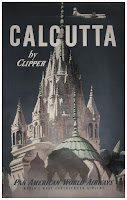In 2006, I witnessed it, one of Nature's breath-taking phenomenona.
I was at Eravikulam National Park, near Munnar. It is home to a rare, endangered species, the Nilgiri tahr. When I went there, an additional surprise was in store. A rare treat, reserved for the fortunate few.
We arrived at about ten o'clock, parked our car and walked through the gate, after buying our entry tickets. There was a fairly large crowd, but entry is restricted to what was once a private game reserve.
We climbed several hundred metres up the
rocks, until we reached the tree-line.
A magnificent view presented itself. The rain-dappled Nilgiris, their gentle slopes shimmering in rainbow-draped
skies. The shola forests, in different shades of green.
The view was breath-taking.
Then we saw them. Grazing in groups, further up, behind the barriers, to keep tourists away from them. Kids with ewes. Rams, with their chocolate-brown hair, resting on rocky overhangs.
The Nilgiri tahr is a rare, endangered species. It is the state animal of Tamil Nadu, but fewer than 2,500 survive. Most of them are in Eravikulam. They are not actually related to tahrs, but a kind of sheep. Their closest genetic cousins are to be found in the mountains of Chile.
We walked further up a path and were met with another breath-taking sight. A meadow carpeted by blooming neelakurinji shrubs. The violet-blue blossoms had covered the entire vista, far into the distance. The Nilgiris had truly turned blue. It was a sight to behold.
The neelakurinji shrubs flower once in 12 years, in a process called masting, in which all the flowers in a group of plants seed at the same time, and then die. Once, the neelakurinji used to carpet whole areas of the western and eastern ghats. Nowadays, the growth in human population has put an end to that.
The next flowering of the neelakurinji will be in 2018.
Text and photos by Shankar A. Narayan
 |
| Elephas maximus indicus, Asian elephant, Annamalai range. — at Annamalai National Park. |
I was at Eravikulam National Park, near Munnar. It is home to a rare, endangered species, the Nilgiri tahr. When I went there, an additional surprise was in store. A rare treat, reserved for the fortunate few.
We arrived at about ten o'clock, parked our car and walked through the gate, after buying our entry tickets. There was a fairly large crowd, but entry is restricted to what was once a private game reserve.
 |
Rhesus macaque, Udumalpet. |
A magnificent view presented itself. The rain-dappled Nilgiris, their gentle slopes shimmering in rainbow-draped
 |
Spathodea campanulata, 'Nandi Flame'. |
Then we saw them. Grazing in groups, further up, behind the barriers, to keep tourists away from them. Kids with ewes. Rams, with their chocolate-brown hair, resting on rocky overhangs.
The Nilgiri tahr is a rare, endangered species. It is the state animal of Tamil Nadu, but fewer than 2,500 survive. Most of them are in Eravikulam. They are not actually related to tahrs, but a kind of sheep. Their closest genetic cousins are to be found in the mountains of Chile.
 |
Nilgiri Tahr, Eravikulam. — at Eravikulam National Park. |
We walked further up a path and were met with another breath-taking sight. A meadow carpeted by blooming neelakurinji shrubs. The violet-blue blossoms had covered the entire vista, far into the distance. The Nilgiris had truly turned blue. It was a sight to behold.
The neelakurinji shrubs flower once in 12 years, in a process called masting, in which all the flowers in a group of plants seed at the same time, and then die. Once, the neelakurinji used to carpet whole areas of the western and eastern ghats. Nowadays, the growth in human population has put an end to that.
The next flowering of the neelakurinji will be in 2018.
 | |
Strobilanthes kunthiana
|
Text and photos by Shankar A. Narayan
























